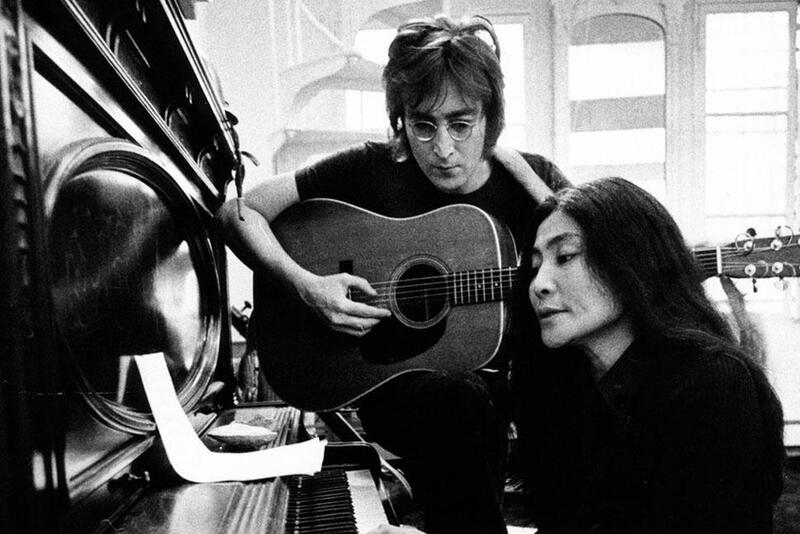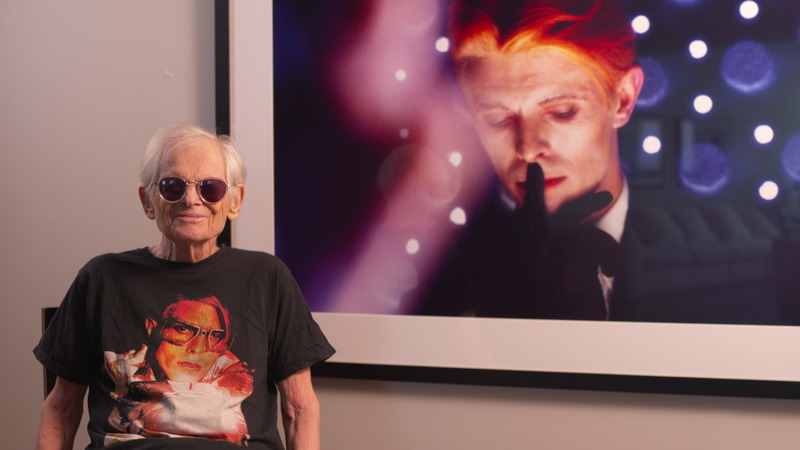
When Activism Finds Its Volume
MOVIE REVIEW
One to One: John & Yoko
–
Genre: Documentary, Music, Biography
Year Released: 2025
Runtime: 1h 40m
Director(s): Kevin Macdonald, Sam Rice-Edwards
Where to Watch: debuting on HBO MAX November 14, 2025
RAVING REVIEW: ONE TO ONE: JOHN & YOKO approaches the well-documented couple with a fresh, tightly focused experience: eighteen months in New York City that culminate in a single concert with a very specific purpose. Rather than assembling a gallery of outside commentators to tell the story, the film puts the period itself in the foreground—television, news breaks, game shows, political broadcasts—then lets John Lennon and Yoko Ono move through that commotion as artists trying to make their actions matter. It’s an elegant structural choice. The result isn’t a scrapbook of greatest hits, but a portrait of process: how two people shaped their lives around a cause and recalibrated their approach as the stakes changed.
Madison Square Garden, August 30, 1972—the “One to One” benefit—the concert functions more like a compass than a destination. We track the couple from a cramped Greenwich Village apartment to a stage built for visibility, and the movie keeps asking what vision is good for. The answer develops piece by piece. You see it in the shift from showy stunts to targeted relief, in the decision to respond to a specific injustice rather than chase attention for its own sake, and in the way performance becomes a tool that serves people, rather than the other way around. That turn gives the documentary a heartbeat; every phone call, rehearsal fragment, and TV snippet nudges the pair closer to purposeful clarity.
Co-director Kevin Macdonald and Sam Rice-Edwards lean into immersion. The apartment reconstruction isn’t a stunt; it becomes a way to live inside their routine without pausing to explain every reference. The TV collage isn’t background filler either. It acts like the era’s ambient sound—constant, persuasive, often ridiculous—against which Lennon and Ono test their ideas. You feel how seductive it would have been to let the noise set the priorities. Instead, the film tracks a narrowing focus, a conscious move away from slogans toward immediate outcomes. Presented this way, the “why” of the concert is as important as the “what.”
The film’s most valuable re-sizing is Yoko Ono. Too much has been said about her in the abstract; too little has let her simply exist on her own terms. Here, she isn’t a provocation to be defended or dismissed; she’s a working artist and a partner balancing public collaboration with private grief. Her stage time reads as an extension of the same internal argument the film is exploring: what does it cost to turn feelings into sound, and when does that translation reach people who need it? A late musical moment, spare and unguarded, quietly reframes the entire arc. The emphasis on her authorship is overdue and handled with restraint.
The political material avoids simplicity. The film doesn’t pretend that a concert topples an empire, nor does it scold the naïveté of believing art can move the needle. It lays out a country pushing through war, protest, and television-era performance, then watches a couple figure out which lever they can actually pull. That clarity keeps the documentary from drifting into generalized nostalgia. The parallels that now emerge without being underlined include cycles of public panic and private resolve, a media environment that rewards spectacle, and the temptation to mistake attention for change. The movie trusts viewers to connect the dots.
If you come expecting a long-form concert film, the structure may initially feel withholding. The payoff is cumulative. Because the music arrives in conversation with everything around it, the set’s highlights resonate all the harder. The project stops being a parade of artifacts and becomes an argument about use: the use of the platform, of energy, and of time. When the Garden sequence finally crests, it feels earned, not because it’s louder, but because the film has already shown what the couple wants that noise to do.
The movie’s restraint allows contradictions to remain visible. Lennon’s humor and impulsiveness, Ono’s insistence on difficult sounds, the friction between message and medium—none of it is sanded down. The concert then reads as a step, not a solution. That honesty turns the finale from a victory lap into a snapshot of a working theory: do the thing you can do, for the people who need it, right now. As a guiding principle, it’s not glamorous, but it feels real.
ONE TO ONE: JOHN & YOKO lands in that sweet spot where archival access, formal intention, and emotional clarity support each other. It avoids the genre’s two most common traps—flattering biography and scolding revisionism—and finds a middle path. The filmmakers respect the couple’s myth without bowing to it, then push past myth toward the tangible. That balance is what makes the film feel important rather than another sidenote. It’s not selling a past we’ve lost; it’s modeling a habit worth keeping. Meaningful editorial choices, and a humane reframing of two people you already think you know. The music matters, but the thinking around the issues of music matters more. The movie understands that, and it’s why the whole plays bigger than any single number. It’s the rare music doc that treats context as chorus rather than interruption—and that choice pays off.
Please visit https://linktr.ee/overlyhonestr for more reviews.
You can follow me on Letterboxd, Instagram, Twitter, and YouTube. My social media accounts can also be found on most platforms by searching for 'Overly Honest Reviews'.
I’m always happy to hear from my readers; please don't hesitate to say hello or send me any questions about movies.
[photo courtesy of MAGNOLIA PICTURES, HBO DOCUMENTARY FILMS, MERCURY STUDIOS, PLAN B/KM FILMS]
DISCLAIMER:
At Overly Honest Movie Reviews, we value honesty and transparency. Occasionally, we receive complimentary items for review, including DVDs, Blu-rays, CDs, Vinyl Records, Books, and more. We assure you that these arrangements do not influence our reviews, as we are committed to providing unbiased and sincere evaluations. We aim to help you make informed entertainment choices regardless of our relationship with distributors or producers.
Amazon Affiliate Links:
Additionally, this site contains Amazon affiliate links. If you purchase through these links, we may receive a commission. This affiliate arrangement does not affect our commitment to honest reviews and helps support our site. We appreciate your trust and support in navigating these links.



Average Rating